There are hundreds of types of ants in the US. Tens of species are also found in California. Most types of ants in California live outdoors and many aren’t considered pests as a result.
Here are the most common ants in the state.
Table of Contents
1. Argentine Ant
Argentine ants (Linepithema humile) come from Argentina. These are common ants in other South American states such as Paraguay and Bolivia as well.
They made their way to California where they are considered household pests.
These ants grow to a size of up to 2.8mm but they live in large colonies. These colonies work together to search for food and water.
Oftentimes, these ants are found in California homes. They make their way inside seeking food.
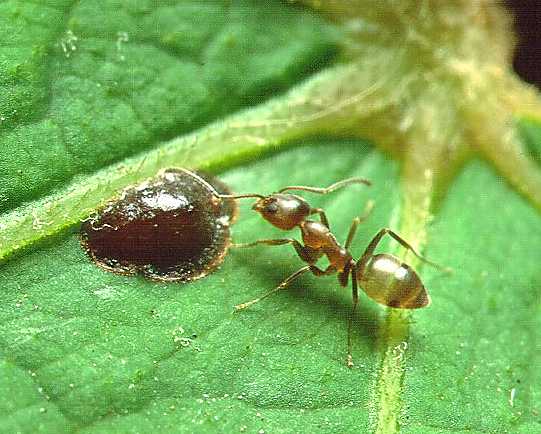
Multiple queens characterized Argentine ant’s colonies. This means killing a single queen rarely has the desired effect when trying to eliminate Argentine ants from California homes.
2. Black Harvester Ant
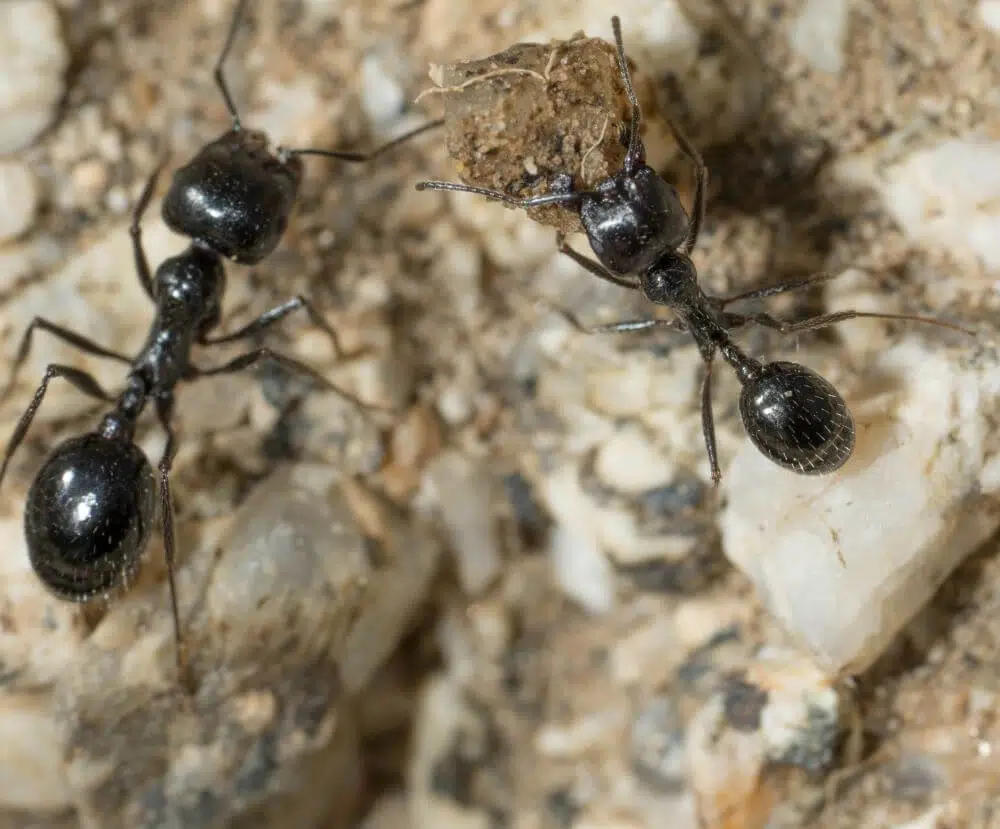
The Black Harvester ant (Veromessor pergandei) is a typical harvester ant highly common in California. It harvests seeds and other types of foods it later stores in its nests in small chambers.
These ants are highly specific to California. They prefer the state’s deserts as well as the Baja California Peninsula where they live in high numbers.
These ants are easier to identify compared to Argentine ants given their large size.
Females are larger than males. The female Black Harvester grows to a body size of up to 10mm. The male Black Harvester grows to a size of 8.5mm.
3. Small Honey Ant

This type of ant (Prenolepis imparis) is common in coastal states such as California. These are considered invading ants as they’re often found in California homes.
The species looks for various types of food. These types of food include sugary foods such as syrup and honey.
The ants are highly problematic as they often invade various crops and plants such as oranges. Flower buds are often damaged by these ants as they chew these flowers to get to the sweet juice.
4. California Harvester Ant

These ants (Pogonomyrmex californicus) are found in warm areas of the South, particularly coastal areas such as California.
The ants are known to live in very large colonies preying on raisin moth larvae.
Living in large colonies, the ants are sometimes subject to a single leading queen and other times subject to multiple colony queens.
The history of these ants is tied to Baja California. The Chumash people of the region consumed these ants as hallucinogenic food.
Today, these ants mostly occur on sandy terrains in the South West.
5. Velvety Tree Ant
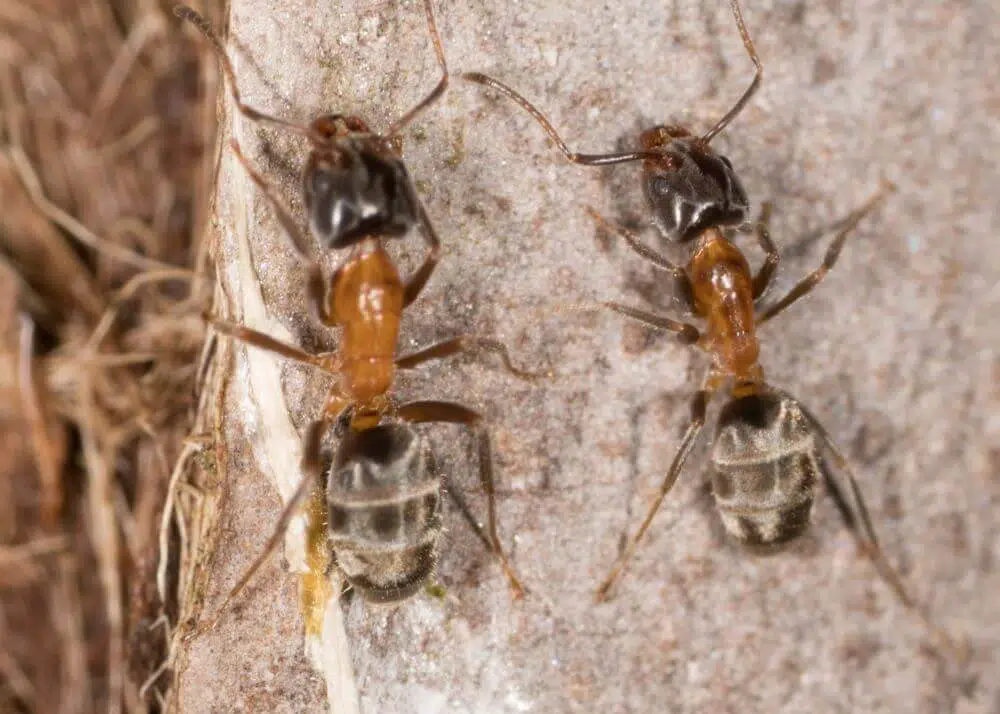
Velvety Tree Ants (Liometopum occidentale) get their name from their nest’s location. These ants sometimes prefer to nest under the roots of trees.
Other times they nest directly in the ground or under boulders. It’s estimated that these ants live in multi-queen colonies.
Velvety Tree Ants for large colonies. These colonies number anywhere between 40.000 and 60.000 ants. As a result, it’s believed multiple queens live in a colony due to the large number of eggs needed to form such a high number of nests.
These ants are omnivores. This means they eat anything they can find. Insects are often dragged back to the nests.
Common in California, the ants can also be seen in mountainous areas as they are adapted to living both at sea level and high altitude.
6. Rough Harvester Ant
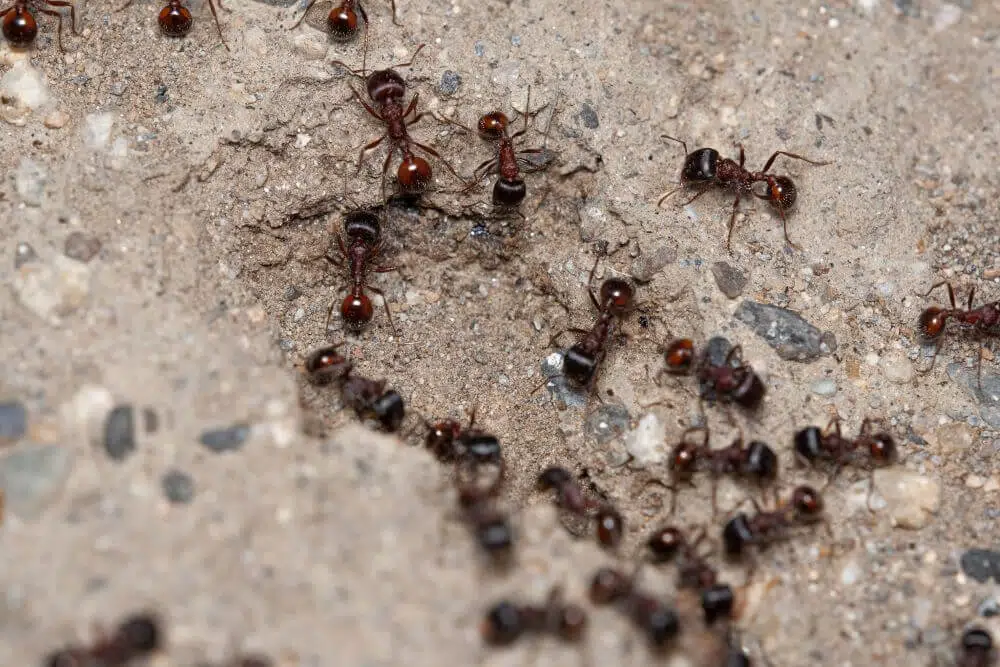
These harvester ants (Pogonomyrmex rugosus) are known for having their working ants. Other harvester ants of the species don’t have worker ants. Other harvester ants enslave other species.
Rough Harvester Ants live in large colonies.
A typical Rough Harvester ant colony can number up to 15.000 ants. These are all ants of its species, without any enslaved ants.
The Rough Harvester Ant is known for its very specific movements. This is why it always creates pathways.
These pathways are marked with pheromones to draw other ants towards the food sources.
7. Veromessor andrei

These seed harvesting ants are part of the Veromessor family. There are 3 sub-species in this family with similar characteristics.
One of the most important defining elements of Veromessor andrei ants is the capacity to look for food both together and individually.
These ants use certain ant pathways to get out of the nest to look for food.
These pathways expand tens of feet away. All ants leave the nest taking the pathway together.
But ants leave the pathways starting to look for food on their own constantly. While not specifically dangerous, these ants are known for above-average aggression. They are particularly aggressive to other colonies of Veromessor andrei.
8. Odorous House Ant
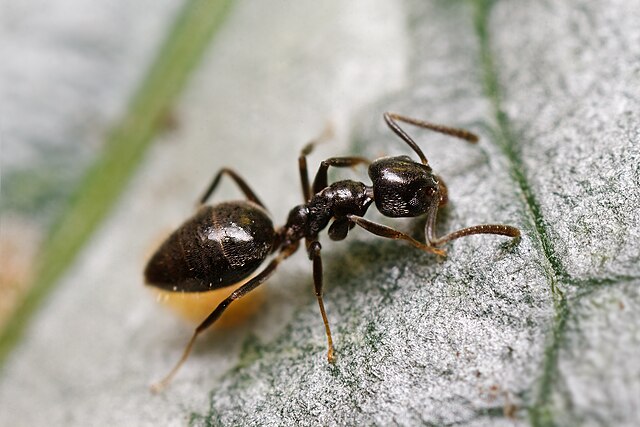
The species (Tapinoma sessile) is known for nesting on all types of grounds. They prefer to nest in the ground but they are also often found in open soil, woods, or under large objects.
These ants live in large colonies, albeit smaller colonies compared to other more common California ants.
A colony of Odorous House ants can be as small as 2.000 individuals. The largest colony of the species was recorded with 10.000 ants.
These ants look for food all day. They use trails or pathways to get out of the nest and move towards food.
Attracted to sweet food, these ants are constantly looking for fruits, especially fallen on the ground even if decaying. They also look for sweet vegetables.
9. Bicolored Carpenter Ant

These ants (Camponotus vicinus) are common in Western North America from Canada to Mexico. High populations are seen around California.
The species lives under rocks and rotting wood. It forms colonies and nests from March to October.
The ants are attracted to multiple food sources.
With the exception of worker ants, all other ants of the species are nocturnal. Worker ants also go out during the day being attracted by dead animals. The decaying liver has been used as bait for the species.
10. Western Carpenter Ant

These ants (Camponotus modoc) are also common in California and parts of Western North America. They are considered pests.
Living in colonies in dead wood, these ants are also seen as home pests. They infiltrate the wood inside the house eventually making pathways through the wood and reducing its structural integrity.
The ants first start small when building colonies inside of the house. A few hundred ants enter the house. They soon replicate thousands of ants.
However, all Western Carpenter ant colonies found in homes are satellite homes. Their main colonies are located outdoors under logs or rotting wood. These main colonies have to be exterminated as well to clear these ants out of the house.
11. Southern Fire Ant
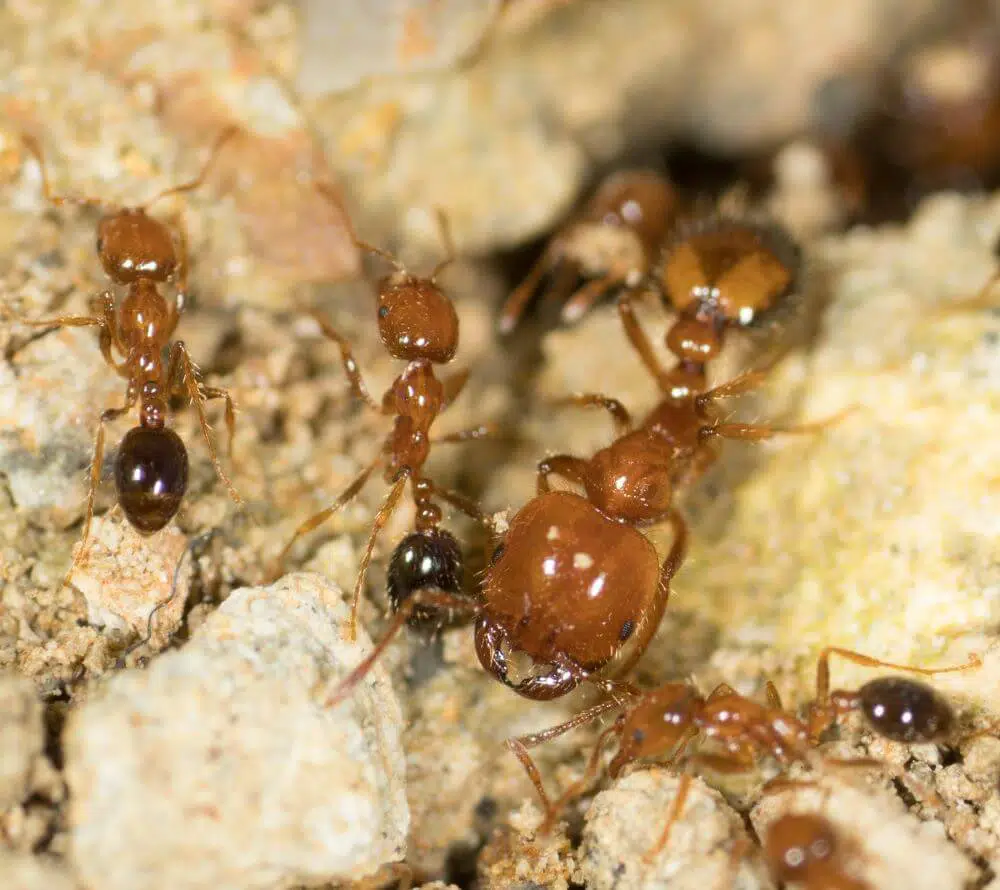
The Southern Fire ant (Solenopsis xyloni) is the fire ant with the largest distribution in California. It often shares its habitat with other fire ants such as the Golden Fire ant. However, it has larger distribution.
The Southern Fire Ant lives in colonies. It has a clear hierarchy which includes a queen and worker ants. The species is known as a stinging ant.
It stings people leaving pain, itchiness, and skin redness behind. These ants have a varied diet. If most fire ants are interested in seeds, the Southern Fire ant is a bit more opportunistic often consuming honeydew collected by other insects.
12. Dark Rover Ant
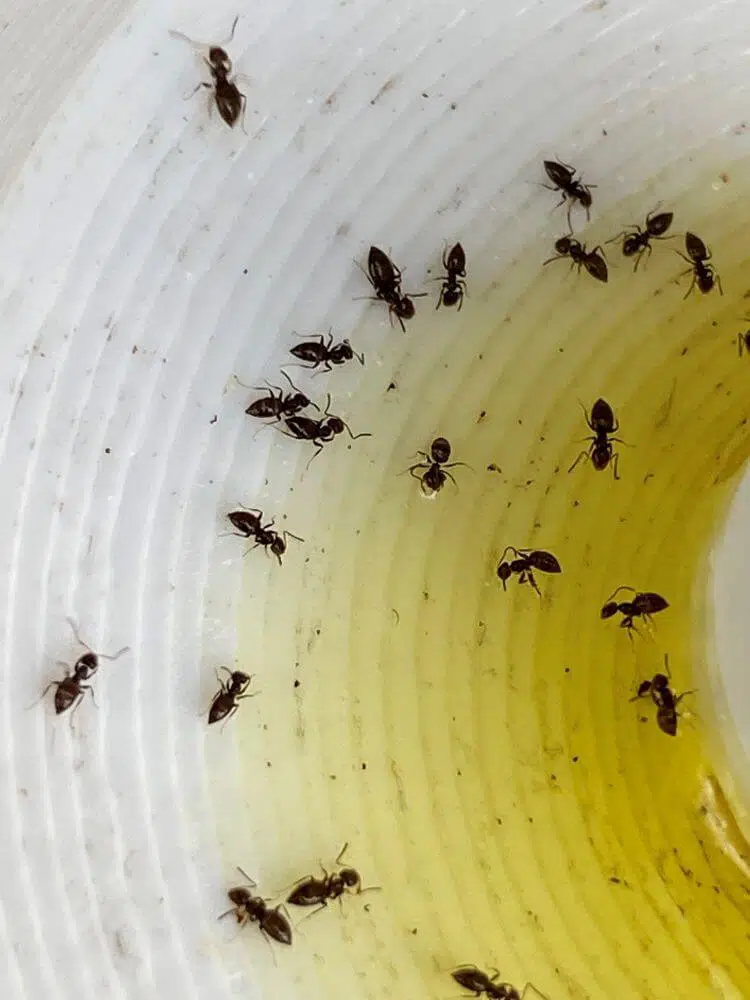
This species (Brachymyrmex patagonicus) has been introduced to California from South America. Studies on Dark Rover Ants are incipient. However, there’s sufficient evidence to see this species as an emerging household pest.
The ants prefer homes with high humidity. This is why reducing interior humidity levels is part of a strategy of dealing with these ants when found inside homes.
Unlike other ants in California, Dark Rover Ants prefer to look for food without creating trails. They leave their underground nest (typically under piles of wood) to eat extrafloral nectaries.
13. Immigrant Pavement Ant

These ant species (Tetramorium immigrans) are native to Europe. They have been introduced to North America where they often fight other ant species.
The name of the Immigrant Pavement Ants comes from their habitat of living on pavements. They often encounter other ant species on warm pavements during the summer.
Fights emerge all the time as the Immigrant Pavement Ant is one of the aggressive ant species in California. Thousands of dead ants can be found on pavements following these fights.
These ants eat almost anything. This includes other ants and other insects as well as fruits.
They form colonies underground. Their nests can be identified by seeing multiple small holes in the ground. Each colony is made up of thousands of ants.
However, Immigrant Pavement Ants aren’t the most numerous colony ants in the state as they rarely reach 10.000 ants per nest.
14. Bicolored Pyramid Ant
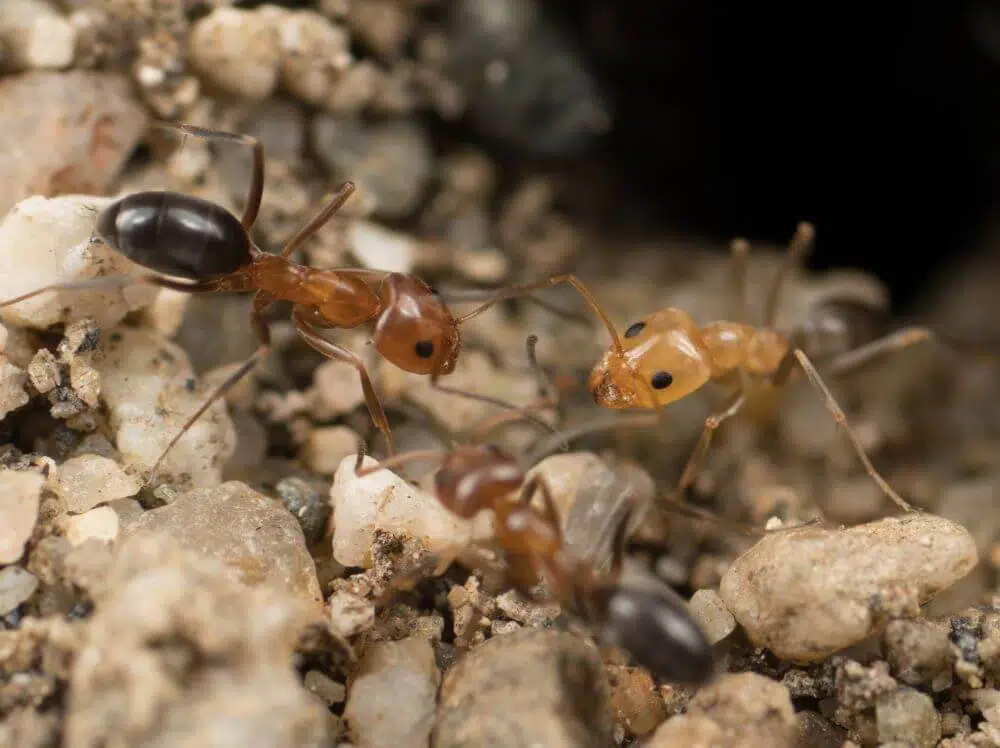
These ants (Dorymyrmex bicolor) are very common in the state. Their high numbers are even known to influence germination rates for plants.
Typically found in sand, these ants build underground nests. They are considered agile and also aggressive, even if they don’t sting.
The ants share their habitat with other ant species that live in sand-rich habitats such as Myrmecocystus. Bicolored Pyramid Ants are even shown to drop small rocks and debris in Myrmecocystus nests to block and kill them inside.
15. Western Thatching Ant

The Western Thatching Ant (Formica obscuripes) gets its name from its thatch or nest it builds to serve as a home for its large colonies.
These dome-shaped nests are made from vegetation. They are commonly used to house as many as 40.000 ants in a single colony.
These large nests make the Western Thatching Ant one of the most populous species in California.
Preferred food sources for these ants are sugars, particularly nectar. These ants have been shown to frequently steal nectar from other insects that collect nectar.
16. Monomorium ergatogyna
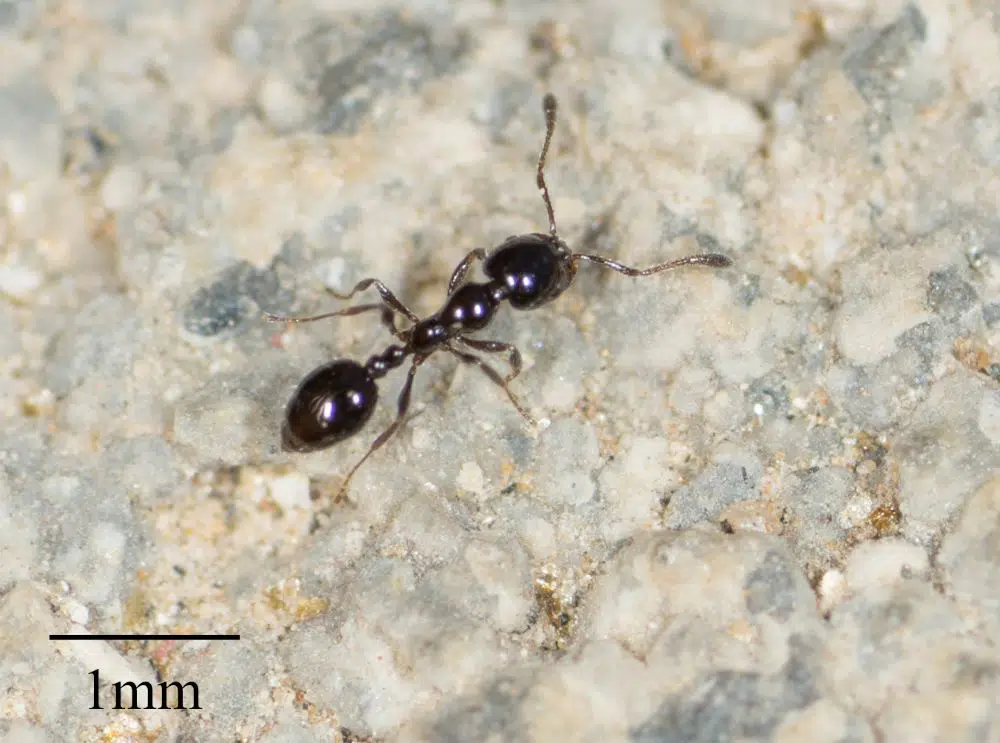
These ants are native to California and neighboring states. They are known for their all-black shiny body.
They live in colonies where multiple queens are responsible for leading the pack.
There’s a single worker cast in these colonies. However, further differences are seen within the species depending on its habitat.
Colonies that live on the coast have slightly different habits from inland colonies. Even queens have different sizes when compared to inland and coastal Monomorium ergatogyna colonies.
17. Formica moki

Formica moki is a species of yellow-golden ants often seen around California homes. This species is considered highly aggressive and a potentially invasive species found inside homes.
Initially attracted by plants in gardens and backyards, these ants make their way inside the house. Their aggressiveness sometimes makes them hard to deal with as they often move their nest from one location of the house to another.
Most commonly, they are found under sidewalks and the sides of California homes.
18. Hairy Smooth Carpenter Ant
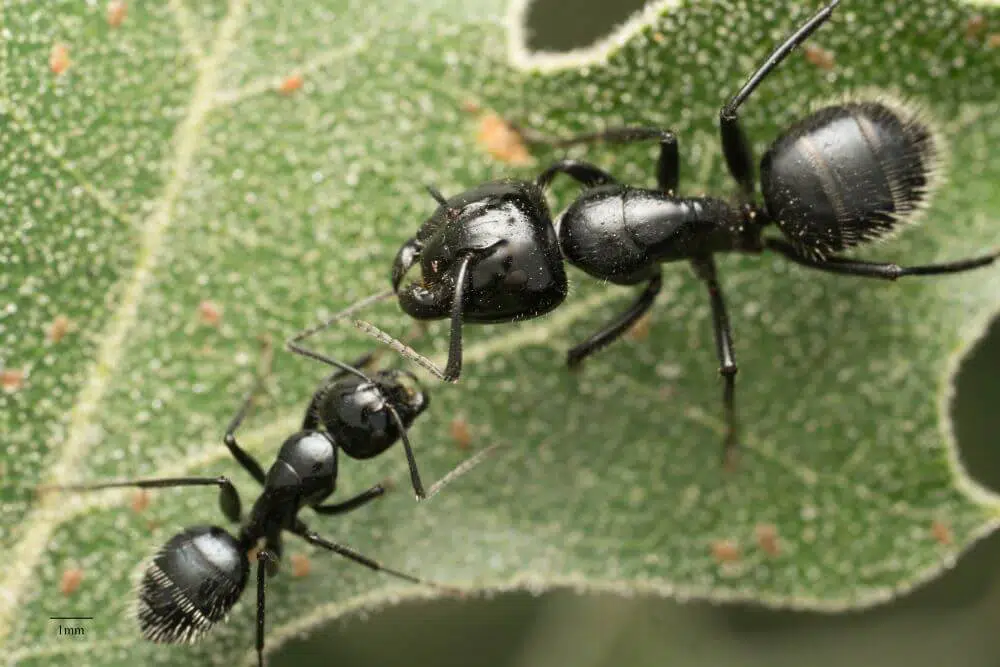
These ants (Camponotus laevissimus) are part of the carpenter group of ants in California. They are considered dangerous to wooden homes.
Unlike other species, they don’t actually eat wood. However, they build galleries inside wood leaving fine sawdust-like material behind.
These ants are typically found on trees. But they frequently make their way inside homes where they cause serious structural damage.
These ants are scavengers and predators having a varied diet. They prefer liquid food such as honey and floral juices. They commonly eat flower nectar.
Hairy Smooth Carpenter ants are diurnal. They commonly go out in search of food at night. If they’re interested in liquid plan food during the day they are scavenging at night.
These ants have been shown to eat dead insects during the night. However, they might also be interested in live insects at times.
19. Red Imported Fire Ant

These ants (Solenopsis invicta) have first been described in 1916. Since then, studies confirm their initial description as necrophobic ant’s behavior.
The species is known for eating dead animals, as well as dead insects. The ants are also venomous.
Red Imported Fire Ant bites are reported each year. They are typically followed by pain and swelling. Many people in the US have been shown to develop allergies to these highly venomous ants. Their venom is typically used to paralyze prey. In rare cases, people bitten by these ants can even go into anaphylaxis.
Further Reading: